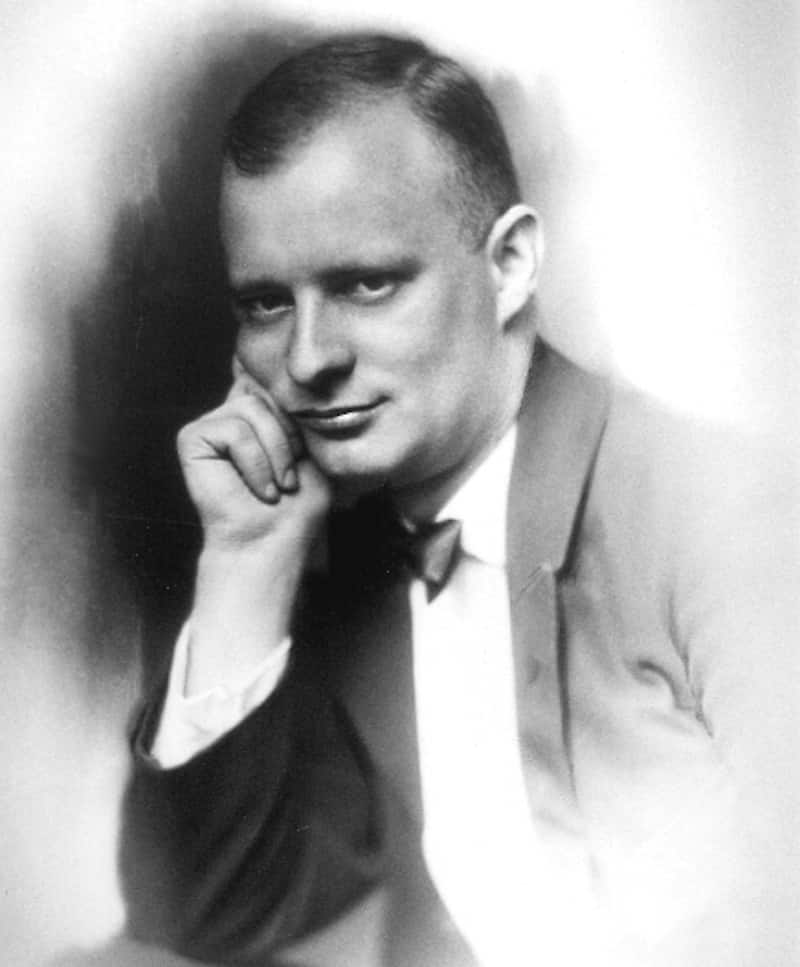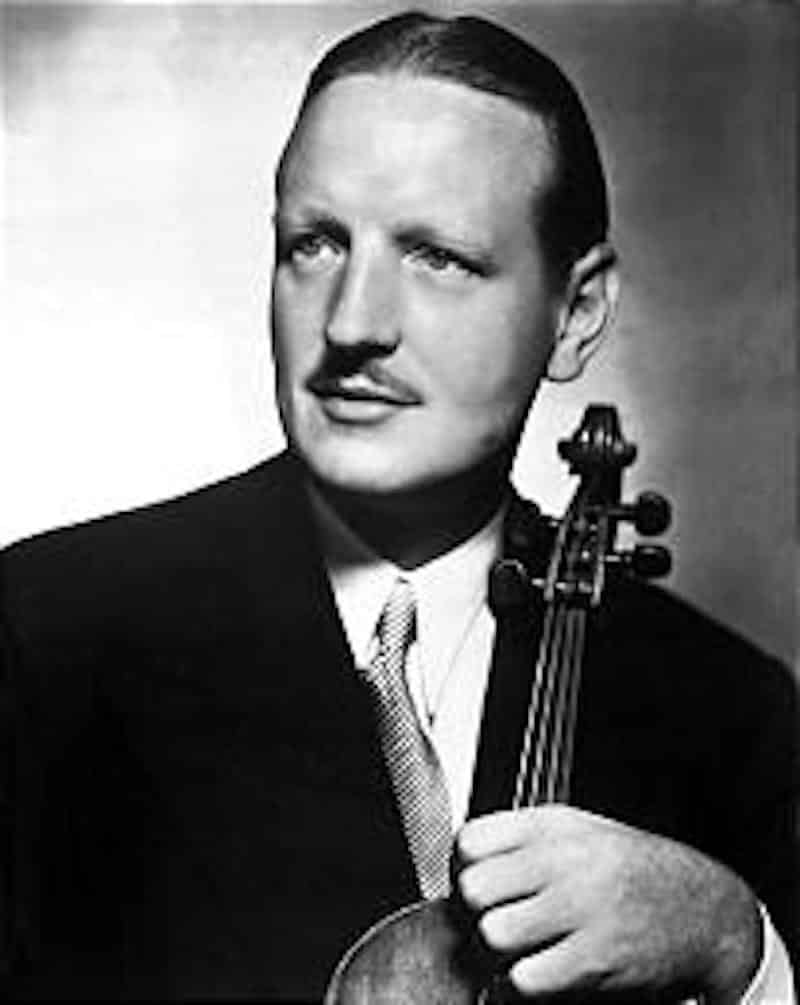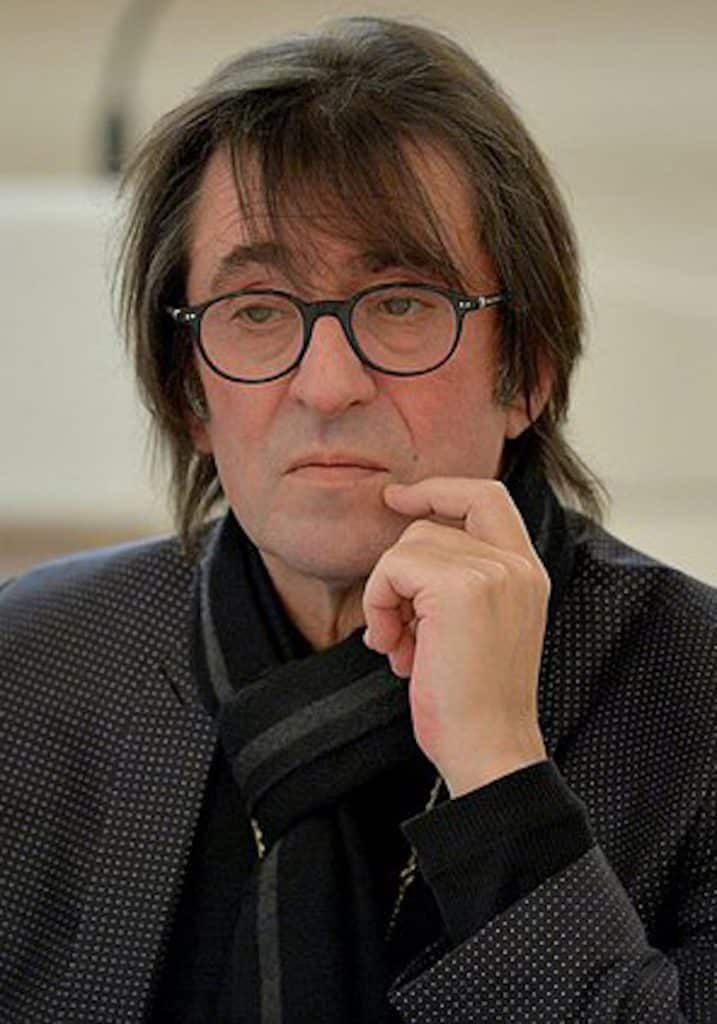While the viola is a lesser-played instrument compared to its cousin, the violin, it has a rich history and is an instrument with many great musicians who have played it.
In this post, we will introduce you to 15 of the greatest and most famous viola players who have made their mark on classical music with their ability on the viola.
1. Paul Hindemith
Born in Hanau, Germany, Paul Hindemith was a composer, violinist, and violist who began his musical studies at a very young age.
He went on to study at the Hoch Conservatory in Frankfurt in his early teens and became the Frankfurt Opera House’s concertmaster at the age of 20.
Though his compositions include chamber works as well as music for children and beginning instrumentalists, Hindemith is best known for his neoclassical style.
In 1938, he was exiled by the Nazis, who considered his work too “culturally Bolshevist.”
Hindemith traveled to Switzerland and then to the United States, where he joined the faculty at Yale University in 1940 and toured the US as a violist.
He composed some of his most famous pieces there, including “The Four Temperaments” and “Sinfonia Serena.”
2. Niccolò Paganini

Born in Genoa, now Italy, Niccolo Paganini is known as one of the greatest violinists of all time and began learning the mandolin at the age of five and violin by the age of seven.
Much of his childhood and adolescence was spent studying under various local and master violinists and rapidly outpacing each of their abilities.
But, as well as a virtuoso violinist he was also a fantastic violist becoming interested in it after studying with master viola player Alessandro Rolla.
He remains known for his legendary collection of stringed instruments.
3. Rebecca Clarke
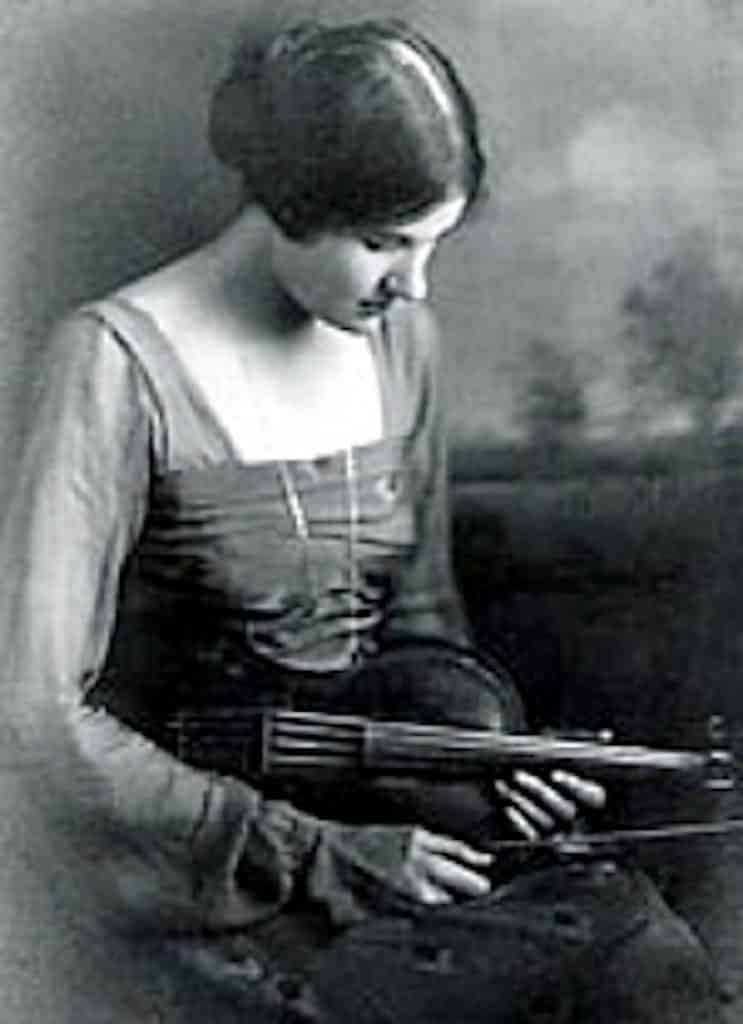
Born in England, Rebecca Clarke began practicing violin in 1903 and joined the Royal College of Music shortly after that.
At the urging of her tutor, Clarke shifted her focus from violin to viola, which she used to support herself when her father cut off her funds for her criticism of his extra-marital affairs.
As a result, she became one of the first female professional orchestral musicians in the world.
Clarke’s most famous works include her “Sonata for Viola and Piano,” composed for a competition in 1919, though no one believed she was the piece’s composer at the time.
4. Kim Kashkashian
Kim Kashkashian grew up listening to her baritone father singing Armenian folk songs in her family’s Michigan home.
She took up the violin at eight years old, switching to the viola at twelve under the instruction of Ara Zerounian at the Interlochen Arts Academy.
Kashkashian is widely known as one of the top violists in the world and has taught and performed extensively internationally.
She’s received a wide range of awards and accolades for her chamber and solo music, including a 2013 Grammy Award for Best Classical Instrumental Solo for Kurtag & Ligeti.
5. Tabea Zimmermann

Tabea Zimmermann was born in Lahr, Germany and precociously took up the viola at three years old.
At the age of 18, she won her first of many international top prizes at a competition in Geneva, Switzerland.
Zimmerman has performed extensively worldwide as a soloist, as part of several major orchestras and chamber groups, including the Arcanto Quartet.
She is best known for her performance of the “Sonata for Solo Viola,” which Hungarian composer Gyorgy Ligeti wrote for her.
Despite her international recognition for her skills as a violist, Zimmermann describes herself as a “musician who happens to play the viola.”
She now devotes a large amount of her time and energy to instructing students in music.
6. Paul Neubauer
Born in Encino, California, American violist Paul Neubauer’s prodigal viola career began with his first international viola competition at the age of 17.
He became the youngest principal string player in the history of the New York Philharmonic in 1984 when he was only 21.
Neubauer’s career includes performances with orchestras around the world and two Grammy nominations for his recorded performances.
He now teaches at the Juilliard School and the Mannes School of Music.
7. Carl Stamitz

German composer Carl Stamitz began studying the violin under his father and began working as a violinist in the court orchestra at Mannheim as a child.
Though he toured extensively, both on the violin and viola, performing in various short-term arrangements, he never did obtain permanent employment.
Stamitz is known today for his wide range of compositions for various instruments, including several concertos and chamber duos, trios, and quartets for viola.
His style was similar to that of Mozart or Haydn, and his works most often tended toward sonata form.
8. William Primrose
Scottish violist William Primrose began violin lessons at his father’s urging, at only four years old.
He pursued his career as a violinist until taking lessons with violin player Eugène Ysaÿe who after hearing him play suggested he switch to the viola.
He is best known for his time with the London String Quartet and the Primrose Quartet with the NBC Symphony Orchestra.
Primrose’s solo career, which took off shortly after leaving the NBC Symphony, includes a wide range of live tours and recordings.
He taught at multiple music schools and universities throughout his career and wrote several books on viola technique.
9. Nobuko Imai
Nobuko Imai began her musical instruction with the violin in Tokyo at the age of six.
She took up the viola as a teenager and fell in love with the instrument’s rich sound.
She moved to the United States and studied at the Juilliard School, where she became known for her creative adaptations of cello pieces to viola.
Her international career as a performing artist currently includes the English Chamber Orchestra, London Symphony Orchestra, and Dallas Symphony orchestra.
10. Helen Callus
Helen Callus is a highly praised and awarded recitalist, concerto soloist, and chamber musician.
Her international performance career includes time with the Tokyo and Juilliard String Quartets and the BBC Concert Orchestra.
She is “one of the world’s greatest violists,” according to American Record Guide.
Her recording of “Walton” with the New Zealand Symphony Orchestra was described as “the most beautiful Walton on disc” by the 2006 Penguin Guide to Compact Discs.
Callus has won multiple awards as a recording artist, beginning with her first release, “Portrait of the Viola,” in 2002.
She served as the first female President of the American Viola Society from 2005 – 2008 and now serves as Professor of Viola at Northwestern University.
11. Yuri Bashmet
Born in Russia and raised in Lviv, Ukraine, Yuri Bashmet began studying viola at the Moscow Conservatory at age 18.
He received his first international first prize at the International Viola Competition in Munich in 1976, launching his international career.
Bashmet has worked closely with composers such as Alfred Schnittke, Giya Kancheli, and Sofia Gubaidulina, all of whom have written compositions for him.
He began conducting in 1985 and has performed as both soloist and conductor with numerous leading symphony orchestras, including the New York Philharmonic and the Paris Orchestra.
12. Lawrence Power
Unlike many violists, Lawrence Power never took up the violin, beginning his musical studies with the viola at eight years old.
He went on to study with Mark Knight at the Guildhall School in London and then Karen Tuttle at the Juilliard School.
After winning several international viola competitions, he was invited to lead the viola section of the Berlin Philharmonic Orchestra but declined to audition.
Instead, he’s performed as a soloist with multiple significant orchestras and chamber groups around the world.
13. Lionel Tertis
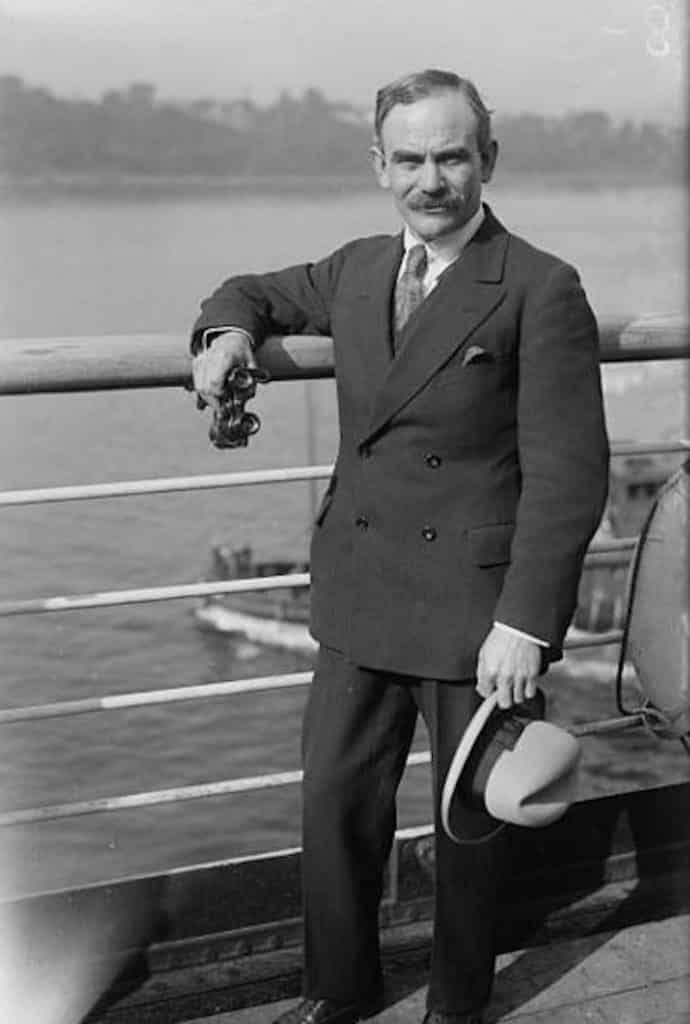
The namesake of the Lionel Tertis International Viola Competition, established in his memory, was one of the first internationally recognized violists.
He began studying violin at the Royal Academy of Music but was encouraged to take up the viola by the principal.
Before long, Tertis was one of the best-known violists in the world, enjoying an extensive touring career across the United States and Europe.
He eventually became a Professor of Viola at the same school where he’d begun his education.
While his discography is extensive, he’s best known for his influence on other violists he’s instructed since.
14. Rivka Golani
Born in Tel Aviv, Rivka Golani took up the violin when she was seven years old, alongside her sister, who was learning the cello.
She wouldn’t begin practicing the viola until age 21, which brought her to the Israel Philharmonic Orchestra.
Golani’s extensive viola discography includes more than 400 pieces that have been written for her by other composers.
BBC Music Magazine named her one of the 200 most important instrumentalists and one of the five most important violists playing today.
Among Golani’s vast array of awards and accolades, she was given the name “Itspankiyakii” – “a woman who sings from a high place” – by the Blackfoot First Nations People of Canada.
She’s also a painter whose works have been on exhibit internationally.
15. Atar Arad
Like many famous violists, Atar Arad began practicing violin as a child; while many changed instruments early, Arad didn’t devote himself to the viola until he was nearly 30.
However, he rapidly rose to recognition on his new instrument, winning several international prizes in short succession.
After touring around the world as a soloist with multiple orchestras, Arad now teaches at Indiana University’s Jacobs School of Music and the Steans Institute for Young Artists in Illinois.
His compositions and recordings include “Concerto per la Viola,” and he has written essays on viola composition for The American String Teacher and The Strad.
Summing up our List of the Greatest Viola Players
We hope you’ve enjoyed learning about these viola players and their contributions to the instrument.
Violas are often overlooked, so it can be helpful for beginners to know some of the history of this underrated stringed instrument!
We’ll be adding to this list with more violists so let us know who we should add next!

